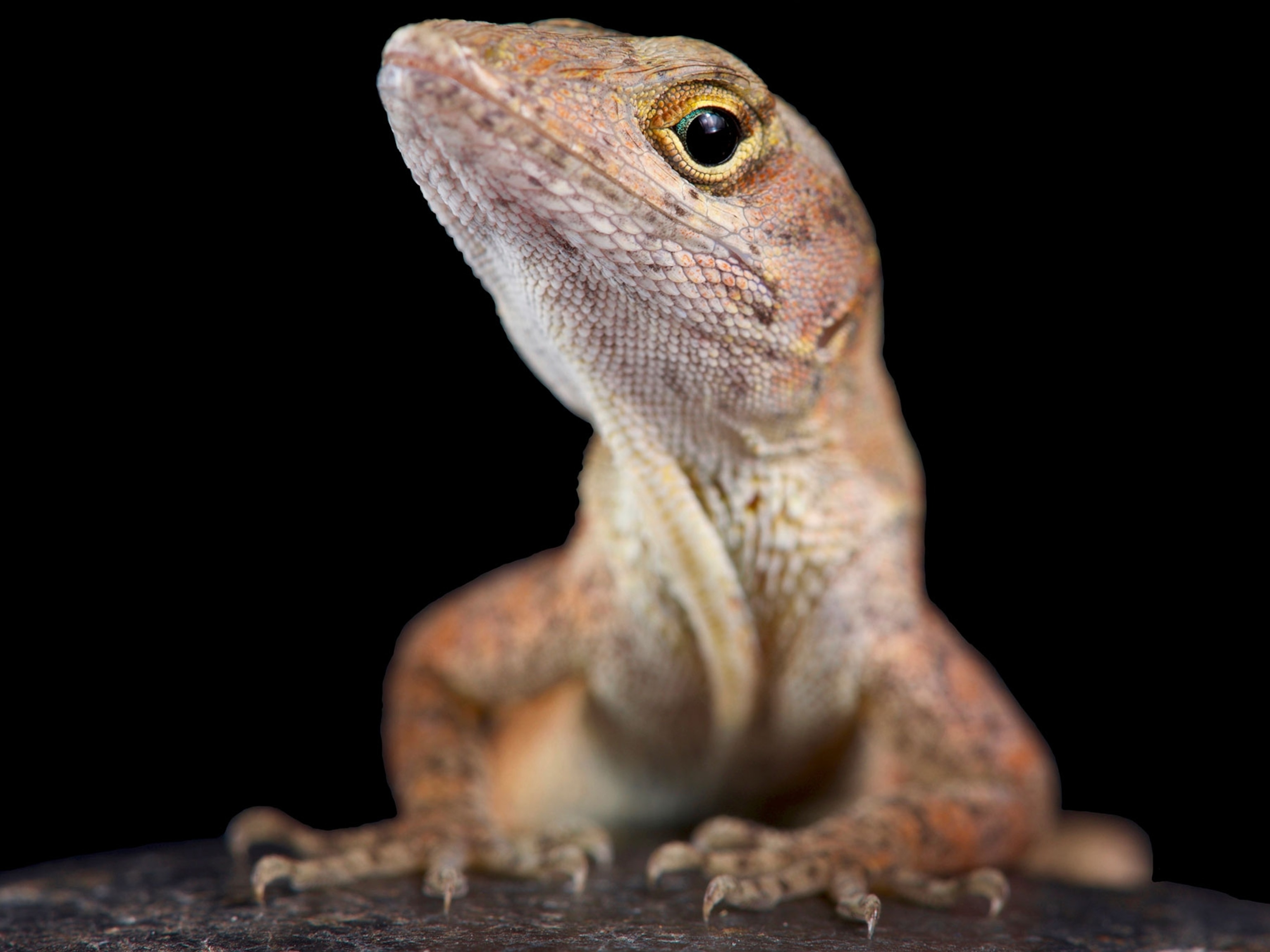Italian wall lizards introduced to a tiny island off the coast of Croatia are evolving in ways that would normally take millions of years to play out, new research shows.
In just a few decades the 5-inch-long (13-centimeter-long) lizards have developed a completely new gut structure, larger heads, and a harder bite, researchers say.
In 1971, scientists transplanted five adult pairs of the reptiles from their original island home in Pod Kopiste to the tiny neighboring island of Pod Mrcaru, both in the south Adriatic Sea.
Genetic testing on the Pod Mrcaru lizards confirmed that the modern population of more than 5,000 Italian wall lizards are all descendants of the original ten lizards left behind in the 1970s.
(Related: "Evolution's 'Driving Force' Shifts Based on Behavior, Study Says" [November 16, 2006].)
Lizard Swarm
While the experiment was more than 30 years in the making, it was not by design, according to Duncan Irschick, a study author and biology professor at the University of Massachusetts, Amherst.
After scientists transplanted the reptiles, the Croatian War of Independence erupted, ending in the mid-1990s. The researchers couldn't get back to island because of the war, Irschick said.
In 2004, however, tourism began to open back up, allowing researchers access to the island laboratory. (Read: "Kayaking the New Croatia" in National Geographic Adventure Magazine.)
"We didn't know if we would find a lizard there. We had no idea if the original introductions were successful," Irschick said. What they found, however, was shocking.
"The island was swarming with lizards," he said.
The findings were published in March in the journal Proceedings of the National Academy of Sciences.
Fast-Track Evolution
The new habitat once had its own healthy population of lizards, which were less aggressive than the new implants, Irschick said. The new species wiped out the indigenous lizard populations, although how it happened is unknown, he said. The transplanted lizards adapted to their new environment in ways that expedited their evolution physically, Irschick explained.
Pod Mrcaru, for example, had an abundance of plants for the primarily insect-eating lizards to munch on. Physically, however, the lizards were not built to digest a vegetarian diet.
Researchers found that the lizards developed cecal valves—muscles between the large and small intestine—that slowed down food digestion in fermenting chambers, which allowed their bodies to process the vegetation's cellulose into volatile fatty acids.
"They evolved an expanded gut to allow them to process these leaves," Irschick said, adding it was something that had not been documented before. "This was a brand-new structure."
Along with the ability to digest plants came the ability to bite harder, powered by a head that had grown longer and wider.
(Related news: "Komodo Dragon's Bite Is 'Weaker Than a House Cat's'" [April 18, 2008].)
The rapid physical evolution also sparked changes in the lizard's social and behavioral structure, he said. For one, the plentiful food sources allowed for easier reproduction and a denser population.
The lizard also dropped some of its territorial defenses, the authors concluded. Such physical transformation in just 30 lizard generations takes evolution to a whole new level, Irschick said. It would be akin to humans evolving and growing a new appendix in several hundred years, he said.
"That's unparalleled. What's most important is how fast this is," he said.
While researchers do know the invader's impact on its reptile brethren, they do not know how the species impacts local vegetation or insects, a subject of future study, Irschick said.
Dramatic Changes
The study demonstrates that a lot of change happens in island environments, said Andrew Hendry, a biology professor at Montreal's McGill University.
What could be debated, however, is how those changes are interpreted—whether or not they had a genetic basis and not a "plastic response to the environment," said Hendry, who was not associated with the study.





